15% off £20
What are age spots?
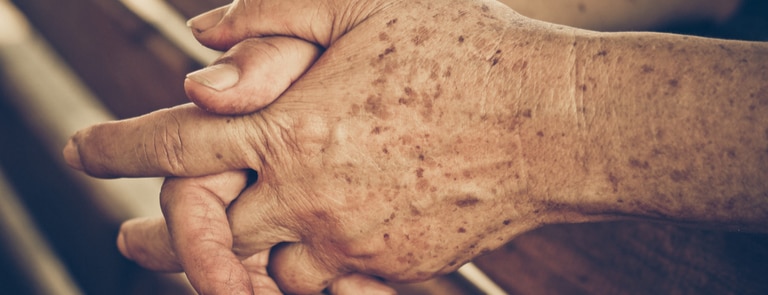
You may have heard of age spots, but do you know what they look like, why they appear and what you can do (if anything) once you have got them?
This article is designed to provide you with a practical intro to age spots – from what they are and how to detect them, to understanding why we get them and what the options are for removing them.
What are age spots?
Age spots, which are also known as sun spots or liver spots, are freckle-like blotches that develop on our skin as we get older.
Despite the name, they aren’t linked to or caused by our liver health, with the vast majority of them being caused by exposure to the sun over the years.1,2
These spots can be found pretty much everywhere on our body, with some people developing lots of them as they age, and some people developing just a handful of them.
They affect all skin types, but it’s adults with lighter skin that tend to get them the most. While some of them may look just like freckles, they don’t fade in the same way freckles can do overtime. For instance, your childhood freckles on your cheeks are no longer there or hardly visible by the time you’re an adult.
People over the age of 50 are most prone to getting age spots. However, it’s also possible for younger people, who spend lots of time in the sun, to get them too.
What do normal age spots look like?
Age spots don’t all look the same. This is due to the fact they can develop on lighter and darker skin, and vary in shape, size, colour and texture too.
However, having said that, there are certain common characteristics to look out for. You can usually identify age spots because they’re:
- Flat, oval areas of increased pigmentation.
- Are tan to dark brown in colour.
- Develop in areas that have been exposed the most to the sun over the years. For example, on the back of your hands and across the tops of your feet, and on your face, shoulders and upper back.
- The size of a freckle - around half an inch in diameter.
- Usually in small clusters.
It’s also possible to get different types of age spots too.
The three most common categories are:4
Cherry hemangiomas
They’re small red dots that appear because of an influx of blood vessels within the skin.
They are common and can appear or show up pretty much anywhere on your face and body.
Lentigines
Are flat, tan/dark spots that look just like freckles. They can be as small as cherry hemangiomas and grow up to the size of a small coin.
They are the most common form of age spot and almost always appear where the skin has been exposed to the sun.
Seborrheic keratoses
They can be both flat or raised and range from being pale to dark brown to black in colour.
It’s not uncommon for them to look a bit like a wart however, they aren’t linked to warts at all.
Why am I suddenly getting age spots?
Age spots are usually associated with getting older because the skin has been exposed to the sun for a considerable amount of time.
As a result of the skin exposure, the skin where the liver spots appear has produced so much skin pigment (melanin), the skin looks darker in these areas. The most common causes of age spots are:
UV light exposure
Age spots aren’t just caused by being out in the sun, any form of UV light exposure can contribute to them forming. Going on sun beds can also have the same effect too.
Having multiple age spots is also referred to as hyperpigmentation, which is when darker patches of pigmented skin, that contain greater amounts of melanin, appear.
Not wearing a sunscreen that provides SPF30 or more protection every time you’re out in the sun is the main culprit. Meanwhile, people with lighter hair and skin, who are prone to burning in the sun, are also more susceptible to hyperpigmentation.
Skin and health conditions
Certain skin conditions and diseases can lead to age spots developing. They include:
- Post-inflammatory hyperpigmentation – when skin becomes discoloured because it’s been scraped or a rash or a breakout has developed
- Pregnancy – age spots are a common side effect of being pregnant for some women. They most commonly appear on the forehead and cheeks and are a result of increased pigmentation. When you become pregnant, your body produces more hormones, which can lead to an increase in pigmentation
- Melasma – is known as pregnancy mask or chloasma and leads to darker patches of skin developing, usually on the face
- Linea nigra – are dark vertical lines that appear lengthwise down the middle of the abdomen during pregnancy
- Riehl's Melanosis – is a form of contact dermatitis that has been linked to sun exposure
- Poikiloderma of Civatte – is a non-cancerous condition that makes part of the neck go red/brown
- Erythromelanosis Follicularis – causes reddish-brown pigmentation that covers the face and/or neck
- Addison’s Disease – is a rare condition in which one of the early symptoms is hyperpigmentation, which is caused by the adrenal glands not producing enough cortisol and aldosterone5
- Hemochromatosis – develops when excess iron levels build up within the body. This can lead to a multitude of symptoms, including patches of darker, bronze-coloured skin
Medication
Certain medication can also lead to age spots due to the fact that they make the skin more sensitive when in the sun, which can lead to increased UV damage.
The medication includes:
- Estrogens – such as Vagifem, Climara and Estrace
- Tetracyclines (broad-spectrum antibiotics) – such as Adoxa (doxycycline), Declomycin (demeclocycline) and Minocin (minocycline)
- Amiodarone – which is used to treat an irregular heartbeat (brand names include Cordarone and Pacerone)
- Phenytoin – an anticonvulsant (brand names include Dilantin and Phenytek)
- Phenothiazines – which are used to treat mental and emotional disorders (brand names include Compro and Thorazine)
- Sulfonamides – which are used to help treat infections (brand names include Bactrim and Septra)6
Can you get rid of age spots?
While age spots are a normal part of getting older, there are a few ways to prevent or remove them.
Preventing age spots
Before we focus on what can be done about age spots if you’ve got them and want to get rid of them, it’s worth covering what you can do to help yourself from getting them in the first place.
While liver spots may be inevitable for some people, there are definitely certain things you can do to avoid them developing and prevent them from getting darker.7
Do – always wear an SPF. Every time you are outside, particularly if it’s a sunny day. Make sure you keep applying it every two hours too, potentially more if you’re swimming or sweating a lot.
Don’t – go out in the sun during peak hours. UV exposure is usually greatest between the hours of 10am and 2pm. Where possible, avoid being out in the sun during this time.
Do – cover up your skin. When you’re outdoors, which can simply be achieved by wearing a hat, tops with long sleeves, long trousers, as well as clothing that’s made from special SPF fabrics for an extra layer of sun protection.
Age spots removal
While the vast majority of age spots don’t cause any discomfort, and it’s easy to forget you even have them (especially if they’re hidden away somewhere on your body), some people would rather they didn’t have them.
If this is you, the good news is there are several things you can do to get rid of them. Let’s take a look at some of the most common methods:
Bleaching creams
Are usually applied to the skin and used on a short-term basis.
- Certain bleaching creams
Certain creams that contain hydroquinone can be obtained via prescription from your doctor – they effectively work by lightening the skin.
More specifically, the hydroquinone reduces the production of melanin, which helps prevent the melanin overproduction that creates darker patches of skin.
There are several over-the-counter creams you can try too – they tend to contain retinoids, alpha hydroxy acid, glycolic acid, deoxyarbutin or kojic acid.
Cosmetic procedures
Are carried out alongside using topical treatments.
-
Laser treatment – involves using focused light energy to remove the skin layer-by-layer, burning off the dark spots and patches in the process
-
Chemical peels – that contain salicylic acid and/or glycolic acid that work by removing the top layer of skin
-
Microdermabrasion – which involves removing cells from the surface of the skin, using either crystal or diamond microdermabrasion
-
Cryosurgery – involves fading age spots by freezing them with a liquid nitrogen solution. Over time, the darkened skin peels away to reveal new skin
Other remedies
If you don’t fancy using topical creams or cosmetic procedures, certain ingredients have been linked to potentially helping fade age spots.
-
Papaya
Exfoliating with papaya can possibly brighten skin because it naturally contains the ingredient exfoliant, alpa-hydroxy acids or AHAs for short.
These acids work by removing the top layer of the skin by weakening the lipids that bond it together. Apply some mashed papaya to your skin and gently rub it in using circular motions before rinsing off with warm water.
-
Turmeric
Research carried out in 2018 has shown that turmeric can potentially prevent how much melanin our skin produces, leading to a reduced risk of developing hyperpigmentation.8
To make a turmeric skin mask, mix one part turmeric with one part honey. Applying a few drops of lemon juice may also potentially help lighten the skin too.
-
Yoghurt
Natural yoghurt contains lactic acid, which is an ingredient that’s naturally found in dairy products, and is an AHA. What’s more, because this AHA comes from dairy, it’s also believed to help correct the skin’s pH levels, as well as improve texture and tone.9
Can age spots turn cancerous?
Age spots are commonly mistaken for skin cancer because they can look like the skin cancer, melanoma. In the early stages, melanoma can look just like lentigines or seborrheic keratosis.10
Just like age spots, melanoma can appear anywhere on the body, making it even more difficult to distinguish between the two.
Generally speaking though, if you are concerned about a mark that has suddenly appeared on your skin, get it checked by your GP, especially if there is a history of skin cancer in your family.11
There are certain characteristics of melanoma that aren’t experienced with age spots:
- painful, bleeding patches of skin or discharge
- asymmetrical shape
- the areas around the spot change from being dark to light or light to dark
- the spots rapidly change appearance over a short period of time
- itchiness
The final say
The bottom line is that we can all get age spots at some point in our life. The more we’ve been exposed to the sun when we were younger, the greater our chances are of developing them on our face, body or both. Some people don’t mind them and don’t do anything about them, while others use topical or cosmetic treatments to reduce their appearance.
They are harmless, but can easily be confused with melanoma, so if you notice something different happening with your skin, it’s always best to book an appointment with your GP to make sure it’s an age spot and not skin cancer.
Last updated: 7 February 2022
- https://www.everydayhealth.com/skin-cancer/melanoma-or-age-spots-how-to-tell-the-difference.aspx
- https://www.mayoclinic.org/diseases-conditions/age-spots/symptoms-causes/syc-20355859
- https://www.mayoclinic.org/diseases-conditions/age-spots/symptoms-causes/syc-20355859
- https://www.everydayhealth.com/skin-cancer/melanoma-or-age-spots-how-to-tell-the-difference.aspx
- https://rarediseases.org/rare-diseases/addisons-disease/
- https://www.verywellhealth.com/causes-of-dark-spots-1069545
- https://www.verywellhealth.com/causes-of-dark-spots-1069545#prevention
- https://pubmed.ncbi.nlm.nih.gov/29552273/
- https://www.byrdie.com/how-to-treat-dark-spots-4686898#citation-8
- https://www.everydayhealth.com/skin-cancer/melanoma-or-age-spots-how-to-tell-the-difference.aspx
- https://www.bannerhealth.com/healthcareblog/teach-me/age-spots-or-skin-cancer-heres-how-to-tell-the-difference



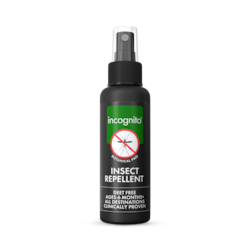
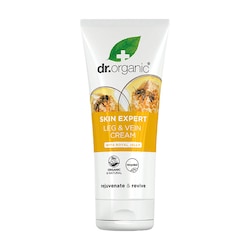
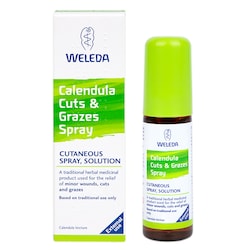
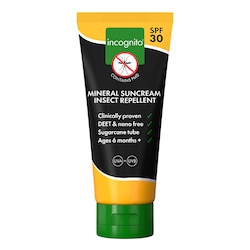
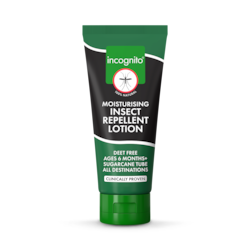
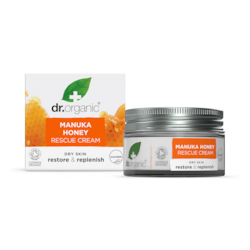
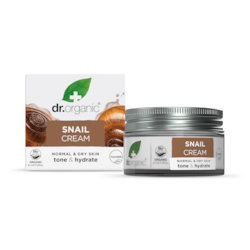
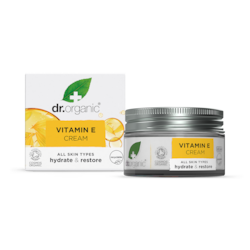

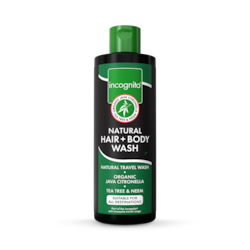
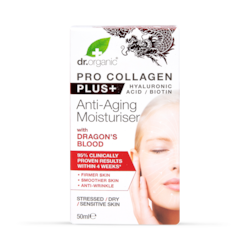
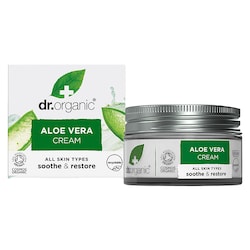
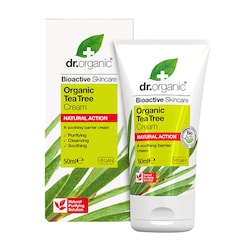
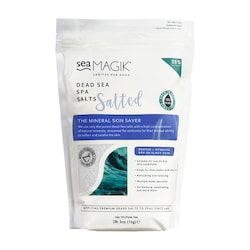
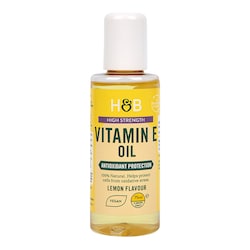
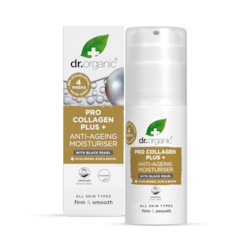
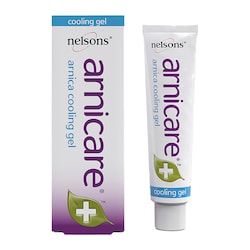
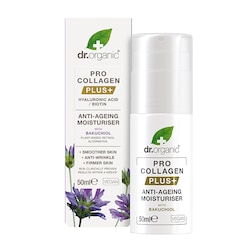
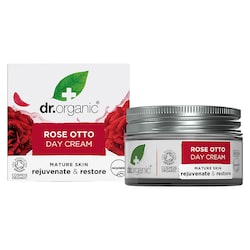
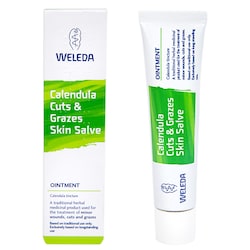

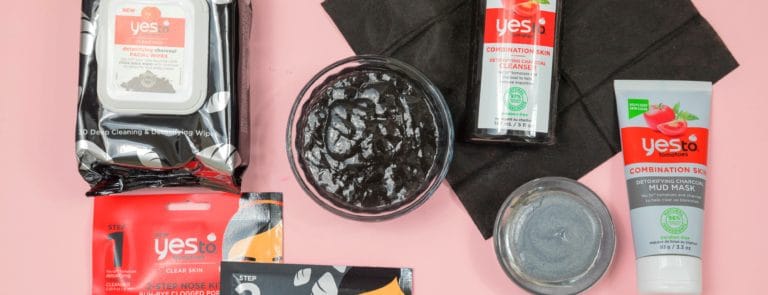
.png)










